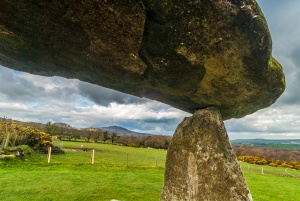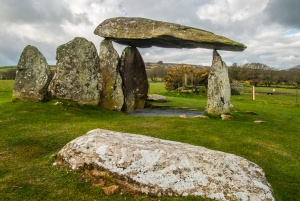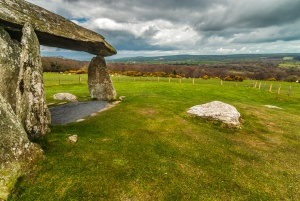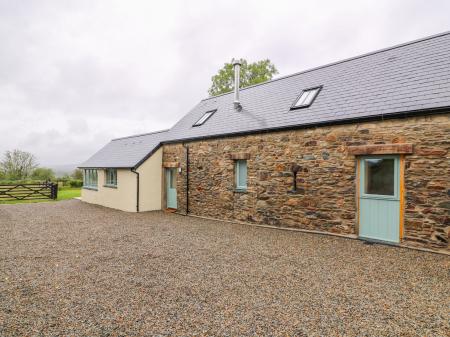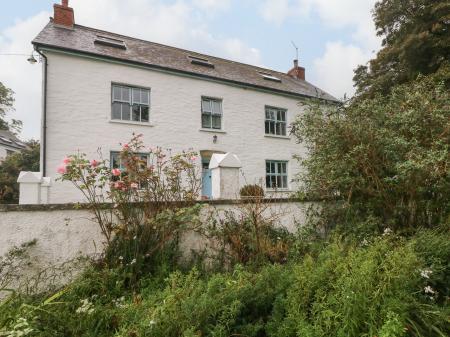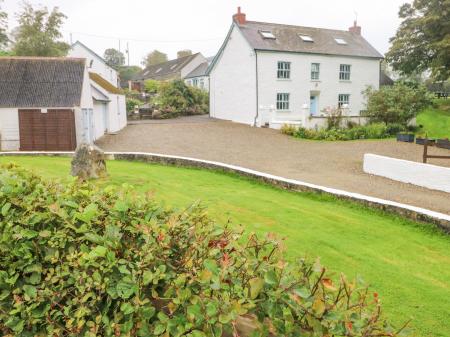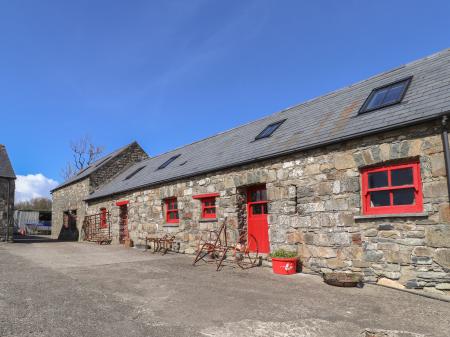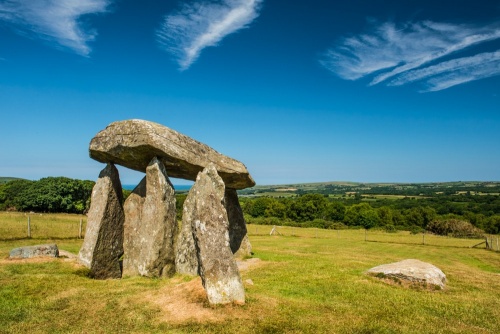
Pentre Ifan was built around 3500 BC, and its Welsh name translates as Ivan's Village. A later name applied to the site was Arthur's Quoit. When the burial chamber was excavated it was found to contain small pieces of pottery and a number of flint flakes.
The excavations showed that the burial chamber was set within a shallow pit, and covered by a mound of stone and turf stretching more than 100 feet long. The main entrance was flanked by a pair of upright stones, which may have been added at a later date.
Rows of pits were found under the mound, suggesting that the pits were in existence before the burial mound was built, so Pentre Ifan may have already been a sacred site before the burial mound was erected here.
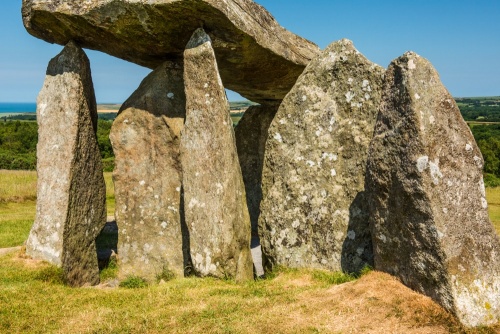
No signs of burials were found, which is very curious. We can only assume that any bones were either removed at some later time or have simply not been found yet. Pentre Ifan was most likely used as a community burial site over a long period of time, rather than for burying one important person.
The cromlech is simply the central portion of a larger burial mound, the remains of which can no longer be seen. A large upright boulder blocks what is presumed to be the original entrance. This suggests that once the cairn had served its original purpose the entrance blocked and the burial chamber sealed.
The gigantic capstone is 16'6" long, 8 feet wide, and is supported 8 feet off the ground. All the stones are igneous rock, found locally.
The burial chamber is oriented on a north-south axis, which is unusual, and stands in a commanding position on a hillside overlooking the Nevern Valley.
Scattered around the cromlech are stones which may have been part of the cairn that once covered the central chamber.
Pentre Ifan was one of the very first ancient sites in Wales to be subject to study by antiquarians. It was sketched, written about, and studied from at least as early as 1603. It became a symbol of Welsh heritage, and was one of only 3 sites in Wales given official protection under the Ancient Monuments Act of 1882.
Getting There
Pentre Ifan is well signposted off the A487 from Newport. You can also reach it from Brynberian on the B4329, but the A487 route is more direct and the road tends to be wider. There is a layby on the west side of the road for parking and a signposted footpath to the site.
